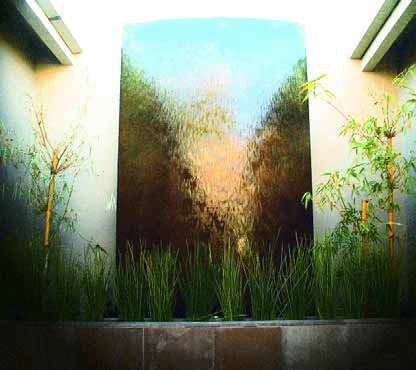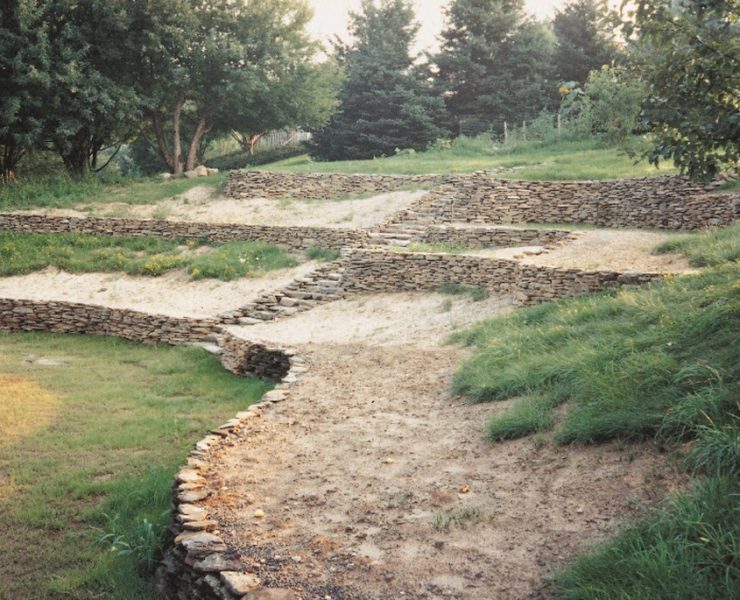planning
In all my many years of working with water, I've never grown tired of its remarkable beauty and complexity - or of the variations it encompasses, the ways it changes and the endless fascination it offers to those who come into its presence. At the heart of water's ability to inspire us and rivet our attention is its capacity to reflect. There's something truly magical about the way water mirrors the sky, a surrounding landscape, nearby architecture or a well-placed work of art. It's a gift of sorts, a timeless bounty that has captured imaginations ever since Narcissus fell in love with
Many watershapers have a single-minded focus, doing all they can to deliver quality shells and surrounding decks to their clients. Quite often, however, that narrow focus means that inadequate space is left for planting - a problem I face quite often as a landshaper. It's clear in many cases that no thought at all was given to the landscape - and certain that no design professional was consulted before laying out and installing the hardscape. The result all too often is that there simply isn't enough room to allow for good-size planter beds. I often find myself rolling my eyes and lamenting the missed opportunities to
Many watershapers have a single-minded focus, doing all they can to deliver quality shells and surrounding decks to their clients. Quite often, however, that narrow focus means that inadequate space is left for planting - a problem I face quite often as a landshaper. It's clear in many cases that no thought at all was given to the landscape - and certain that no design professional was consulted before laying out and installing the hardscape. The result all too often is that there simply isn't enough room to allow for good-size planter beds. I often find myself rolling my eyes and lamenting the missed opportunities to
Maximizing the potential of landscape lighting is always about thinking ahead - a philosophy that absolutely applies when it comes to planning and designing the lighting for a watershape. The process begins with a set of questions that should be considered at the outset of any project: Is the watershape to be the focal point of the composition, or is it to be one among equally important features such as plantings, sculptures or hardscape details? Is the feature to be visually prominent at night, or is it to blend in with the darkness? Will the water you are lighting be in motion, or are you working with a still surface? Observers and chief vantage points also come into play. If the feature will mostly be viewed from passing automobiles rather than by pedestrians, for example, the issue of glare must be directly considered for safety reasons. If the watershape is to be seen from a lit interior space, then we know that its lighting level must be equal to or greater than that of the interior lighting. Likewise, relative brightness is an issue in making the illuminated watershape work with the rest of an illuminated landscape. The most important need in all of this is for
When it's completed sometime in mid-2002, the Mesa Indoor Aquatic Center will be among the premier U.S. facilities for competitive swimming, diving, water polo, synchronized swimming and synchronized diving. Once it's up and running, MIAC will be the country's largest indoor competitive swimming facility owned and operated by a municipality; just as certainly, it will also act for years to come as host to countless world-class aquatic competitions. A project like this
As is the case with a stream's aesthetics, the functionality of any multi-level, gravity-driven waterway must be considered from the outset of any project. After all, no matter how natural and beguiling a stream may be in appearance, if it doesn't hold water, work properly in terms of hydraulics and filtration or provide ecological balance, the whole thing can and will become a nightmare. Fortunately, making streams work isn't all that difficult - as long as you keep your eye on a critical set of fundamentals. Last time, we laid out the stream course, created
Retaining walls are used for one simple reason: to hold something back. Whether you need to terrace down to a lower yard, hold up a house on a hillside lot or provide a level area for watershape installation, these walls are indispensable when you lack the room needed to grade a sloped area gradually. Of course, this notion of holding back the forces of ground movement is no small challenge, and proper engineering and construction are critical. Do the job well, and a retaining wall will hold up indefinitely. But if you cut corners or
Surely you've heard this line before and never believed it, but I'm here to tell you that size does matter. Have you ever, for example, built a pond or fountain with concrete either surrounding it or fanning out from it beneath the soil - and then had your clients say they wanted a very mature tree or shrub planted right up against the edge? There you are with six inches of soil (maximum!) to work with, and there's just no way to



















